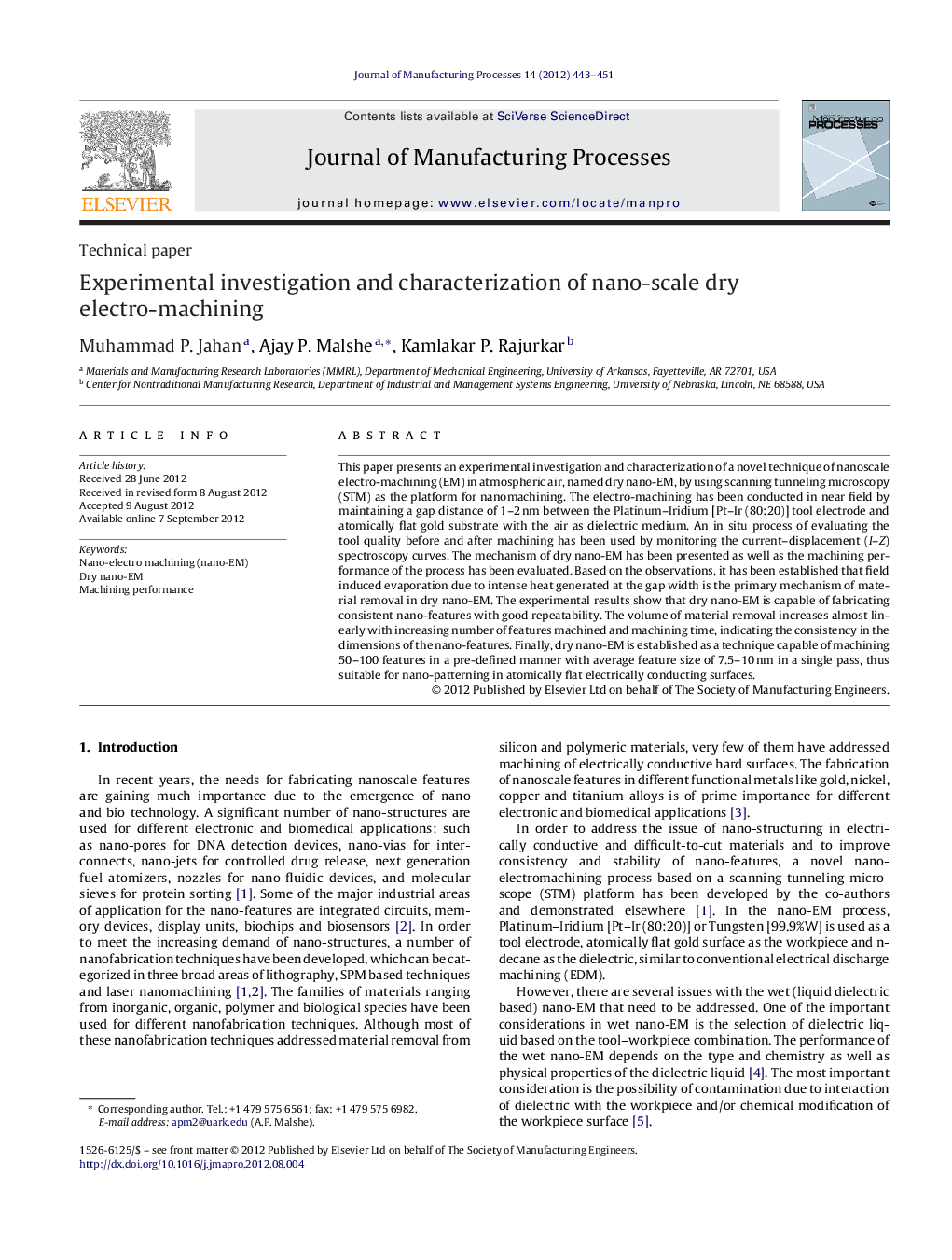| Article ID | Journal | Published Year | Pages | File Type |
|---|---|---|---|---|
| 1697144 | Journal of Manufacturing Processes | 2012 | 9 Pages |
This paper presents an experimental investigation and characterization of a novel technique of nanoscale electro-machining (EM) in atmospheric air, named dry nano-EM, by using scanning tunneling microscopy (STM) as the platform for nanomachining. The electro-machining has been conducted in near field by maintaining a gap distance of 1–2 nm between the Platinum–Iridium [Pt–Ir (80:20)] tool electrode and atomically flat gold substrate with the air as dielectric medium. An in situ process of evaluating the tool quality before and after machining has been used by monitoring the current–displacement (I–Z) spectroscopy curves. The mechanism of dry nano-EM has been presented as well as the machining performance of the process has been evaluated. Based on the observations, it has been established that field induced evaporation due to intense heat generated at the gap width is the primary mechanism of material removal in dry nano-EM. The experimental results show that dry nano-EM is capable of fabricating consistent nano-features with good repeatability. The volume of material removal increases almost linearly with increasing number of features machined and machining time, indicating the consistency in the dimensions of the nano-features. Finally, dry nano-EM is established as a technique capable of machining 50–100 features in a pre-defined manner with average feature size of 7.5–10 nm in a single pass, thus suitable for nano-patterning in atomically flat electrically conducting surfaces.
